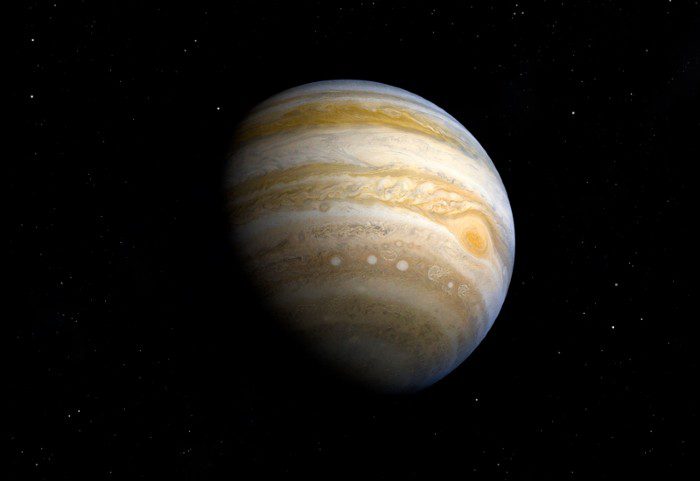Jupiter is as exotic as the Sun. The gas giant is mostly made up of hydrogen and helium. The planet’s atmosphere has long puzzled scientists. Recently, Japanese skywatchers claimed to observe a flash in Jupiter’s atmosphere. It was likely caused by a space rock. The asteroid slammed into the planet’s atmosphere, causing a flash. The flash was observed close to the southern edge of the North Temperate Belt in the North Tropical Zone. This is the second instance in recent times when skywatchers have observed such a phenomenon. Earlier in September, a Brazilian skywatcher had claimed to spot a similar flash in the planet’s atmosphere. Japanese skywatchers clicked photos of the phenomenon. Skywatchers felt like the flash was shining in the gas giant’s atmosphere for a very long time.
The incident was reported on October 15. It was photographed using a Celestron C6 telescope. The claim of Jupiter hit by a space rock was confirmed by noted Japanese astronaut Ko Arimatsu. The flash included two types of light — visible and infrared. It gave the planet a strange pink glow. Notably, such a phenomenon is very common on Jupiter. It experiences such impacts regularly. This is because of the planet’s powerful gravitational force. Jupiter is also the most massive planet among both terrestrial and jovian planets in the Solar System. It can easily pull small objects, like space rocks or asteroids. All objects burn after hitting Jupiter’s thick and turbulent atmosphere, causing a flash.
Scientists say that objects hit the planet every few months. Some researchers say that the monitoring program might record one impact per year. Skywatchers are not sure if the space rock’s impact left debris that can be monitored by scientists. The debris field defends on factors like the rock’s size, the intensity of the impact, and its exact location. The last flash that was observed by a Brazilian skywatcher did not create any debris. It probably burnt up entirely in Jupiter’s thick atmosphere. Notably, scientists are unaware of whether an object or a spacecraft can survive through the atmosphere of Jupiter. The gas giant is believed to have no solid surface. NASA’s Galileo probe was designed to drop into Jupiter’s atmosphere. But the agency lost contact with Galileo just an hour after it reached around 93 miles into the atmosphere. The agency is not sure how deep the probe was able to travel before the planet’s high temperatures and pressures destroyed it.
Being one of the leading news writers of the medicalmarketreport he writes on other news sites like media.market.us, DailyHeraldBusiness, and many more., Steven holds a specialization in the domains of business and technology. The passion he has for the new developments in connected devices, cloud technology, virtual reality, and nanotechnology is seen through the latest industry coverage which is done by him. His take on the consequences of digital technologies across the world gives his writing a modern and fresh outlook.
